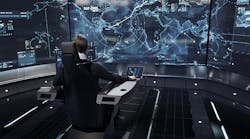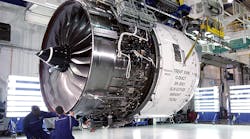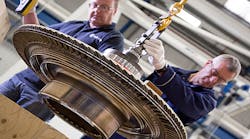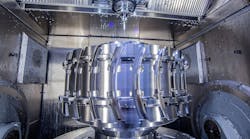The ongoing weakness of the oil-and-gas sector is one factor prompting Rolls-Royce Plc to accelerate downsizing and restructuring its Marine business. While offshore energy programs account for about 60% of the division’s revenues, Rolls-Royce stated “continuing weakness in the maritime market” — which for the Marine division includes merchant fleets and naval vessels, as well as the offshore operations — drove its decision.
“The ongoing market weakness that has followed the dramatic fall in the price of oil continues to have an adverse impact upon our order book and profitability,” explained Mikael Makinen, president of Rolls-Royce Marine. “We have made significant progress in transforming Marine into a far more agile and simplified business than we were, and we have to take further steps to address our cost base.”
The restructuring will include streamlining the senior management team and implementing a series of cost-reduction initiatives that will lead to about 800 fewer employees worldwide. The current employment total is roughly 4,800 in 34 countries. Last year, Rolls-Royce announced it would reduce employment by about 1,000, and the new downsizing measures would add to that total.
“Reducing our workforce is never an easy decision, but we have no option but to take further action beyond the changes we have made to date,” Makinen said. “This remains a fundamentally strong business, but we need to overcome the immediate challenges and focus our investments on the technologies that will shape our future growth.”
Rolls-Royce projected it would reduce overhead costs by £45-50 million (est. $57-64 million) of annualized savings from mid-2017. The restructuring efforts are expected to cost about £20 million (est. $25.5 million) over two years.
In addition to downsizing, Rolls-Royce plans to reorient the Marine business toward new electrical and digital technologies, which it noted would address the industry’s shift toward “ship intelligence.”
Ship intelligence refers to Rolls’ portfolio of data collection and analysis to increase asset performance and optimization, using onboard and onshore technologies to “sense, acquire, transfer, analyze and act (SATAA),” in areas like health management, optimization and decision support, and remote and autonomous operation.
In addition, Rolls has proposed establishing a Research & Development center to focus on new marine propulsion technologies, and to expand its Marine Services hub for Northern Europe. Both of these would be located in Ulsteinvik, Norway.









